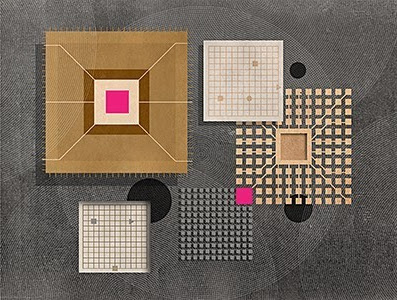A new chapter in technology is going to be unfolded with neuromorphic computing. The approach of neuromorphic computing mimics the way neurons on human brain are connected and communicate with each other. Experts opine that the neuromorphic chips consume much lesser power when compared to that of the conventional CPUs.
Researches in neuromorphic computing:
Steve Furber, the head of neuromorphics research team, University of Manchester, England spoke about their research under the project SpiNNaker in the Neuro Inspired Computational Elements (NICE 2017) workshop. He agreed that the field of neuromorphics is still under research and take more time to be expanded into commercial market.
There currently is a lot of hype about neuromorphic computing. It’s true that neuromorphic systems exist, and you can get one and use one. But all of them have fairly small user bases, in universities or industrial research groups. All require fairly specialized knowledge. And there is currently no compelling demonstration of a high-volume application where neuromorphic outperforms the alternative. - Steve Furber.
Chris Eliasmith from the University of Waterloo, Canada said the field needs to meet the hype issue “head-on.” Chris classified neuromorhpic demonstration as an application running a simple AI application. As a real-time experiment, the researchers were able to run robots with the neuromorphic chips. They were have observed that these robots are capable of navigating down a mountain trail. In the other experiment, these robots managed to roll over the squares with a specified color pattern on the floor. Chirs also stated that there is still more to go and these are just rudimentary experiments.
 |
| Arrangement of memory in neuromorhpic chips |
Construction of neuromorphic chips:
A neural network consists of two layers that contain group of elements with very similar functionality of that of the neuron in human brain, as indicated with different colors in the illustration. The constructs in the right side depict the mapping of neurons in an IBM TrueNorth Chip. All of these neurons are connected through synapses in the form of a matrix, which are connected to a set of inputs. These inputs are capable of generating spikes. These spike are the sources of information to be processed by the neural network.
 |
| Illustration of neuromorhpic construction |
The construction mentioned above is called Spiking neuron and this is the basic building block of a neuromorphic chip. In conventional electronics, the neurons can be compared to the AND, OR and XOR gates; they form the logic implementation of a chip. In conventional electronics, the inputs are in the binary format 0 or 1. But in the case of spiking neurons, the inputs are taken in the form of electrical pulses. The major advantage of neuromorhic chips is that the circuits in them are activated upon a spiking signal only.
 |
| Prototype of neuromorphic machine under SpiNNaker project |
You can have a glans at the prototype of neuromorphic machine with 50,000 neuromorhpic chips to create a network of one billion neurons under SpiNNaker project.











0 comments:
Post a Comment